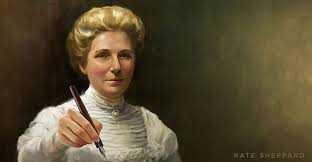Explore the World's Best Ideas
Join today and uncover 100+ curated journeys from 50+ topics. Unlock access to our mobile app with extensive features.
Kate Sheppard
She is the world's first successful suffragette. Her work and petitioning of New Zealand's parliament is the reason that the nation became the first country in the world to grant women the right to vote.
After New Zealand embraced universal suffrage in 1893, Sheppard inspired successful suffrage movements in other parts of the world.
61
366 reads
Kate Sheppard's life
- Kate Sheppard was born on March 10, 1847, in Liverpool, England.
- After the death of her father in 1862, she lived with her uncle in Nairn.
- Her uncle, a minister of the Free Church of Scotland, taught her the values of Christian socialism that she always remembered. She possessed an extensive knowledge of both science and law.
- In the late 1860s, Sheppard moved to Christchurch, New Zealand with her mother and sister.
- Sheppard befriended Alfred Sauders, a politician and prominent temperance activist who influenced her ideas on women's suffrage.
47
193 reads
Rejected by Parliament
In the late 1880s, Sheppard began drafting and promoting petitions to New Zealand's parliament that would prevent women from being employed as barmaids.
It was rejected by parliament, and she became convinced that politicians would continue to reject petitions put forward by women, as long as women did not have the right to vote.
48
186 reads
Petitions to support the vote for women
By 1888, Sheppard became the President of the Christchurch branch of the New Zealand Women's Christian Temperance Union (WCTU). She quickly became a prominent figure of the women's suffrage movement, and hosted political events across New Zealand.
In 1891, Sheppard started making parliamentary petitions to persuade politicians to support the vote for women.
50
161 reads
The petitioning process
- In 1891, Sheppard created a petition with 10,085 signatures.
- John Hall, a supporter of Sheppard, presented her petition to parliament with the proposed amendment to the existing Electoral Bill that would allow women to vote. It passed in the House of Representatives but failed in the Upper House.
- Sheppard's next petition had 20,274 signatures, but it failed again in the Upper House.
- The third petition contained 31,872 signatures, the largest petition the New Zealand parliament had ever received. The Electoral Bill passed, and the enfranchisement of women was signed into law in 1893.
49
113 reads
Kate Sheppard's tactics copied
Seeing the success of the suffrage movement in New Zealand, woman's suffrage groups around the world started to follow in her footsteps, copying her tactics with enormous success.
Australia granted women the right to vote in 1902, Finland in 1906, Norway in 1913. The trend continued long after Sheppard's lifetime.
49
166 reads
IDEAS CURATED BY
Alana 's ideas are part of this journey:
Learn more about history with this collection
Different Easter traditions around the world
The significance of Easter eggs and bunnies in modern culture
The importance of the holiday in the Christian faith
Related collections
Similar ideas
5 ideas
Centers of Progress: Wellington (suffrage)
humanprogress.org
1 idea
Susan B. Anthony
biography.com
Read & Learn
20x Faster
without
deepstash
with
deepstash
with
deepstash
Personalized microlearning
—
100+ Learning Journeys
—
Access to 200,000+ ideas
—
Access to the mobile app
—
Unlimited idea saving
—
—
Unlimited history
—
—
Unlimited listening to ideas
—
—
Downloading & offline access
—
—
Supercharge your mind with one idea per day
Enter your email and spend 1 minute every day to learn something new.
I agree to receive email updates

